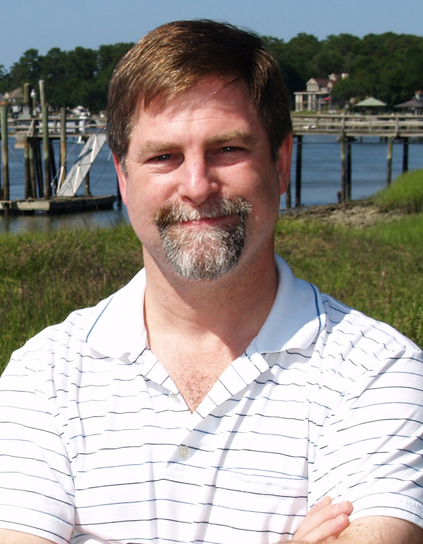Skidaway Institute of Oceanography scientist Clark Alexander has begun a multi-investigator project to assess the vulnerability of the Southeast Atlantic coast to future threats ranging from sea-level rise to shoreline erosion.
The project is funded by a $377,000 grant from the National Oceanographic and Atmospheric Administration. It is part of a larger, $1.06 million project awarded to the Governors’ South Atlantic Alliance (Alliance), to coordinate efforts in Georgia, Florida, South Carolina and North Carolina to develop a consistent method of assessing coastal threats in the four states.
“Our overall goal is to develop a process to evaluate our coast’s physical and economic vulnerability to hazards like sea level rise, flooding, storms, hurricanes and erosion, and do so in a uniform way throughout the region,” said Alexander.
A key component of the project is further development of a computer program called AMBUR. Originally created by Georgia Southern University’s Chester Jackson when he was a graduate student at Skidaway Institute, AMBUR is a powerful tool to evaluate erosion and accretion on a changing coastline.
“Dr. Jackson will enhance AMBUR’s capabilities so that it can be used to evaluate additional coastal characteristics,” Alexander said. “We want to include additional factors such as habitat, elevation, population density, economic valuation and different shoreline types.”
While Jackson is working on AMBUR, Alexander and his team will be collecting data on coastal physical, biological, demographic and economic parameters, while also meeting with coastal managers from the four states comprising the Alliance to determine which parts of the Southeast coast are most critically in need of assessment. Once identified, these areas will become the first coastal regions targeted for analysis with the new AMBUR tools. When completed, the scientists will be able to present coastal managers with information and maps describing coastal vulnerability for at least a portion of each state. Future funding will be sought to expand the analysis to the whole southeastern coastal region.
“By its very nature, this project will identify the most vulnerable areas along the coast and will provide an unbiased analysis of the incentives and disincentives for development in those areas,” said Alexander.
The project is expected to run for 18 months.



